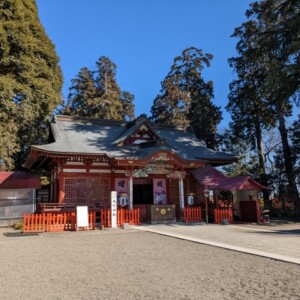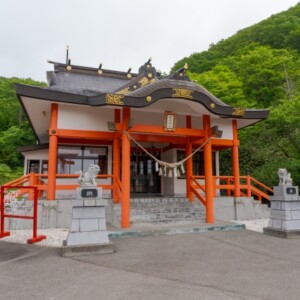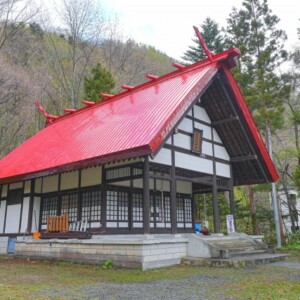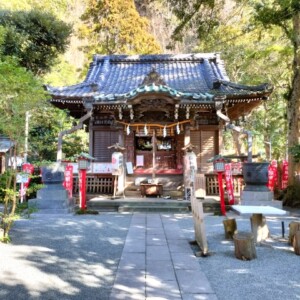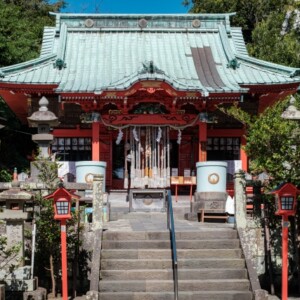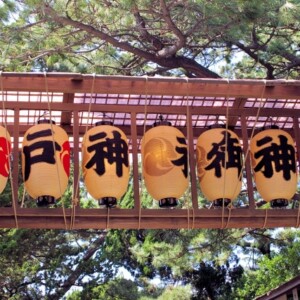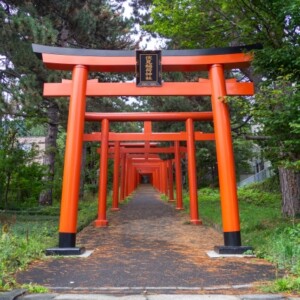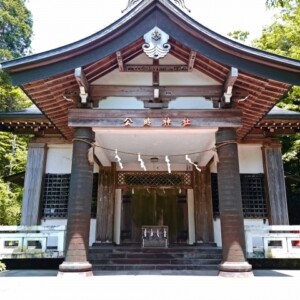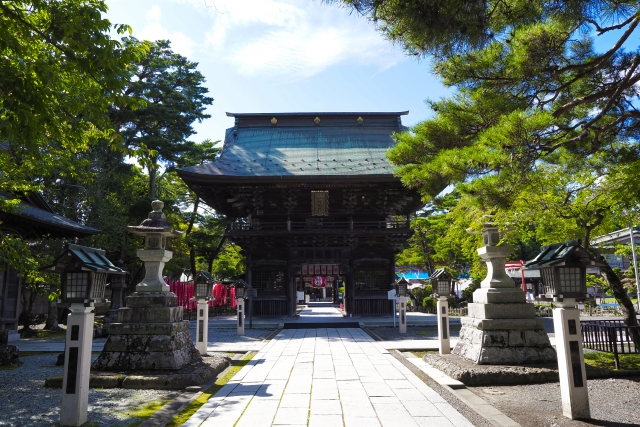
Takekoma Shrine|Complete guide to the history, highlights, and worship at this ancient shrine, one of the three most sacred shrines in Japan
Takekoma Shrine, located in Iwanuma City, Miyagi Prefecture, is one of the three most sacred shrines in Japan and has been worshipped for over a thousand years. It is said to have been founded by Ono Takamura in 842, and is an ancient shrine that enshrines three gods who protect food, clothing, and shelter. Approximately 1.5 million people visit the shrine each year, making it one of the most visited shrines in the Tohoku region for Hatsumode (New Year’s visits).
Outline and basic information about Takekoma Shrine

Takekoma Shrine is a prestigious shrine, formerly a prefectural shrine, and after World War II became an attached shrine of the Jinja Honcho. Also known as Takekoma Inari, the shrine was formerly known as Takekuma Myojin. Even today, the local people affectionately call it “Takekoma-san.
History and Origin
It is said that Takekoma Shrine was founded in 842 by Ono Takamura, a councilor who is also famous in the Ogura Hyakunin Isshu, as a great god of Tohoku pioneering and industrial development when he was appointed as Mutsu governor. According to shrine legend, when Ono Takamura was assigned to the post of Mutsu governor, the shrine was built by inviting Fushimi Inari to the shrine.
Interestingly, there is an anecdote that during the reign of Emperor Go-Ryosen (1045-1068), Noin, who was on a tour of Mutsu Province, built a hermitage on Baokutsu Mountain adjacent to the shrine, claiming that the god of Takekoma Shrine appeared as a child on stilts.
During the Warring States period (1467-1568), the temple temporarily declined, but later developed under the respect of the Date family, as evidenced by the donation of land to the temple by Date Norimune. In the Edo period (1603-1867), the shrine was revered by successive generations of the Date family, the lords of the Sendai domain, and in 1807, it was honored with the rank of Shoichi (the highest rank in the Shinto religion).
The company name “Takekoma” is a corruption of the old name “Takekuma” for the current Iwanuma City area, and is said to have originated from the Abukuma River that runs through the city, which tells of the area’s long history.
Gods and Benefits
Takekoma Shrine enshrines three deities: Kurainatama no Kami (the deity Ukanomitama, or Inari) as the main deity, and Ukemochi no Kami and Wakumusubi no Kami as the secondary deities. These three deities are collectively called “Takekoma Inari-O-no-Kami,” and are revered as gods that protect food, clothing, and shelter, the foundation of human life.
These deities are believed to be worshipped for industrial development, good harvest, prosperous business, and safety at sea. In recent years, they have also been revered as gods of traffic safety, protection from bad luck, and safe delivery. In recent years, the shrine has also been revered as a god of traffic safety, luck in getting rid of bad luck, and protection against childbirth. The shrine is especially known for its prosperity of business, and is visited by many business people and store owners.
Highlights and Features of Takekoma Shrine

Within the precincts of Takekoma Shrine, there are many precious structures and beautiful natural scenery that have been handed down from the Edo period and are a delight to the eyes of visitors. The shrine grounds, where historic buildings and seasonal nature are in harmony, are truly a sanctuary where visitors can find peace of mind.
Architectural and Structural Attractions
The most notable structure of Takekoma Shrine is the Karamon Gate, designated as a Tangible Cultural Property of Miyagi Prefecture. It is thought to have been built in 1842 (Tempo 13) based on the year inscribed on the base of the pillars, and is a valuable cultural asset that is highly regarded as a representative building of shrine architecture built in the prefecture in the late Edo period (late 1600s) and late 1700s.
This Karamon is a shikyakumon (four-legged gate) that exists on a stone paved platform in front of the worship hall and has a copper shingle roof. It is the largest Karamon in Miyagi Prefecture, and is a structure of high artistic value. It is rich in carvings such as cloud and dragon carvings on the gable wall, wave carvings on the transom, wooden nose of a Chinese lion, and carvings of cloud and dragon baskets under the rainbow beam, and is known as a gate that combines gravity and elegance.
The approach and Zuijinmon (tower gate) were built in the 9th year of Bunka (1812), and inside the Zuijinmon are statues of Zuijin and Kamihitsune, which were designated as Tangible Cultural Properties of Iwanuma City on May 11, 1990. Zuijinmon is a magnificent two-story gate with an impressive and dignified appearance that welcomes worshippers.
The current shrine pavilion was built in 1710 by Date Yoshimura, the fifth lord of the Sendai domain, and was designated as a cultural property of the city, but was destroyed by arson by the Leather Workers’ Association in the early hours of November 21, 1990, and was rebuilt in 1994. The current shrine pavilion is a beautiful structure faithfully reproducing the traditional style.
Nature and Scenic Beauty
The precincts of Takekoma Shrine are surrounded by rich nature, and visitors can enjoy beautiful scenery in each of the four seasons. Particularly noteworthy is the Takekoma cherry tree located near the shrine’s pond. Although this cherry tree is only 15 years old, it is known as a rare cherry tree that blooms in spring, fall, and winter, delighting the eyes of visitors throughout the year.
When the Emperor Showa gave a lecture at Takekoma Shrine, he wrote a poem “Takekoma no kami no miyashiro mode kitaeru hatsuzakura mite” (The Emperor’s poem “Takekoma no kami no miyashiro mode kitaeru hatsuzakura mite”), which testifies to the beauty of these cherry trees.
Statues of foxes, the messengers of Inari Shrine, are placed throughout the shrine grounds, welcoming visitors with various expressions of “Okitsune-sama. These fox statues are associated with an anecdote about the founding of the shrine, in which an offshoot of the Great Deity, borrowing the form of a white fox, hid himself in the forest behind the present shrine, which was taken as an oracle and used as the basis for building the shrine.
During the summer, the shrine holds a “Natsu-mode” (summer visitation), in which many wind chimes and windmills are set up on the shrine grounds. The wind-bell arch along the approach to the shrine is particularly impressive, and countless wind chimes, which play summery sounds whenever the wind blows, coolly welcome visitors.
Cultural Properties and Important Collections
In addition to the aforementioned Karamon Gate, a Miyagi Prefecture Tangible Cultural Property, and Zuijinmon Gate (tower gate), a Iwanuma City Tangible Cultural Property, Takekoma Shrine also has a horse museum on its grounds. In addition to the prototype of the equestrian statue of Date Masamune, the museum exhibits a few horse-related materials in Japan, and is open on the third day of the New Year and during the Hatsuuma Grand Festival.
A variety of good luck charms and sacred fuda can be awarded at the awarding office on the temple grounds. Especially popular is the “Kaiun Kitsune-mikuji,” a lucky charm with a cute-looking fox inside, which is especially popular among female visitors.
Guide to Worship and Visiting the Shrine
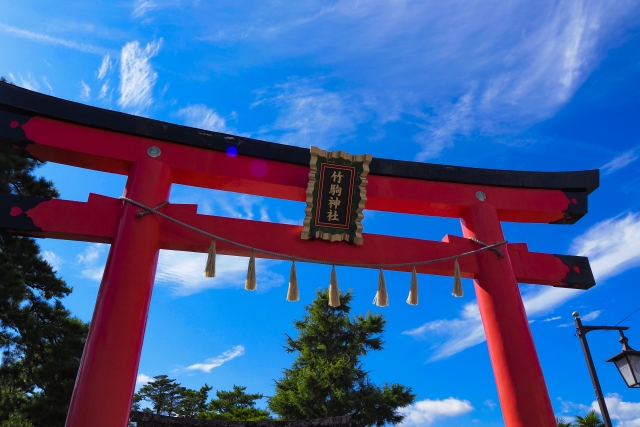
As one of the three Inari shrines in Japan, Takekoma Shrine is visited by many worshippers throughout the year. We will provide you with basic information about visiting the shrine so that you can make the most of your time on the sacred grounds by observing the proper manners of worship.
Worship Etiquette and Manners
At Takekoma Shrine, an Inari Shrine, you may visit the shrine according to the general manners of shrine visitation. Bow when passing through the torii gate and avoid the center of the path. After purifying yourself at the water closet, go to the hall of worship and pray with two hands and two beats.
As a precaution unique to Inari Shrine, dogs are not allowed at Takekoma Shrine. This is out of consideration for the fox, the messenger of Inari Shrine, and we ask for your understanding and cooperation.
It is important to keep quiet and be considerate of other visitors to the shrine. Photography is generally permitted, but please refrain from taking photographs during prayers or rituals.
Annual and Seasonal Events
The biggest event at Takekoma Shrine is the Hatsuuma Grand Festival, which is held for seven days from the first horse day of the second lunar month. This grand festival is a springtime tradition that attracts many worshippers from within and outside of the prefecture, and traditional events such as a yakko parade are also held.
Summer Pilgrimage, held from July 1 to August 31, is another summer tradition at Takekoma Shrine. Wind chimes, windmills, and paper lanterns are set up on the shrine grounds and the shrine is dressed up in special costumes only for the Summer Pilgrimage, and special events such as lighting up the shrine at night are also held.
On New Year’s Mikaga Day, the shrine is known for being one of the most visited shrines in the Tohoku region, along with Mutsu Province’s Ichinomiya Shiogama Shrine, and attracts many visitors who pray for a safe and peaceful New Year.
Various other festivals are held throughout the year, including “Natsukoshi-no-Oharai” on June 30. The detailed schedule can be found on the official website and SNS.
Red Seal and Good Luck Charm Information
Takekoma Shrine offers beautiful red seals, and special red seals are available during the summer pilgrimage period. If you do not have a red seal book, an original red seal book for Takekoma Shrine is also available.
As for good luck charms, as is typical of Inari shrines, there is a wide selection of charms that wish for prosperous business and good luck. The “Kaiun Kitsune Mikuji” is a particularly popular charm that contains a fortune inside a cute fox lucky charm.
During the summer pilgrimage period, a good luck charm with a fox wind chime motif and a “white fox ema” so cute you will want to take it home with you are also available, and are popular among visitors as seasonal good luck charms.
Various prayers for family safety, business prosperity, good luck, and protection from bad luck are also offered in the spacious shrine hall, where visitors can receive divine blessings. If you wish to pray, we recommend that you confirm the time and fee in advance.
Access and Information
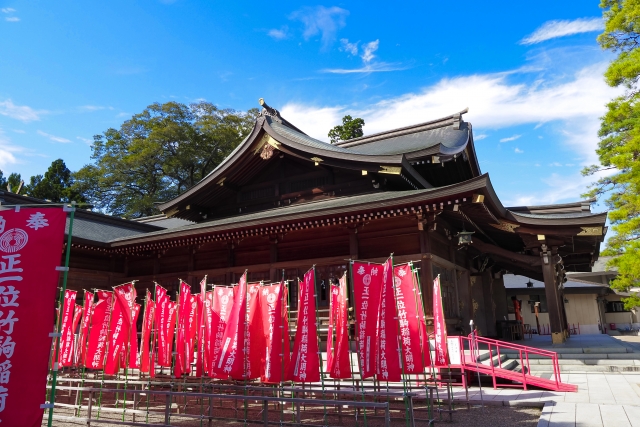
Takekoma Shrine is located in the center of Iwanuma City, Miyagi Prefecture, and is easily accessible by both public transportation and private vehicles. The shrine is located near major Tohoku trunk roads and railroad lines, making it a convenient location for worshippers from both inside and outside of the prefecture.
Transportation Access
Access by train is a 15-20 minute walk from Iwanuma Station on the JR Tohoku Main Line and Joban Line. A statue of Basho stands in front of Iwanuma Station, and there is a guide to the “Takekuma-no-matsu” pine tree mentioned in Oku no Hosomichi, allowing visitors to enjoy a literary stroll while visiting the shrine. There are signs placed throughout the route from the station to the shrine, so even first-time visitors can arrive without getting lost.
Access by car is very convenient, taking only about 10 minutes by car from the Iwanuma IC of the Sendai-Tobu Road. If you are using the Tohoku Expressway, please transfer to the Sendai Tobu Road at the Murata IC or Shiroishi IC and drive to the Iwanuma IC.
Takekoma Shrine is located at a historically important transportation hub, where the Higashiyama Road and Tokaido Highway, both of which originate in the Kinai region and travel eastward, first meet. As a result, the area has long been a place where two major routes, the Pacific Coast Route and the Inland Route, diverge and merge, and many people have come and gone.
Hours of worship, fees, and parking information
Takekoma Shrine is open from 6:00 am to 5:00 pm. However, during special periods, such as the summer pilgrimage period, the shrine is open at night, and the opening hours are extended until 9:00 p.m.
There is no charge to visit the shrine, but an additional fee is required if you wish to receive a prayer service. Please contact the shrine in advance for information on hours and fees for prayer services. Please note that the shrine is closed on the first and third Tuesday of each month.
Free parking is available in the parking lot, which can accommodate 17 large vehicles and 150 regular vehicles. However, during major events such as Hatsumode and Hatsuuma Grand Festival, the parking lot is expanded to accommodate up to 50 large vehicles and 300 standard-sized vehicles, but it is still expected to be crowded, so public transportation is recommended.
The temple grounds are barrier-free, and wheelchairs are available for rent so that visitors with disabilities can visit the shrine with ease.
<Address> 1-1 Inari-cho, Iwanuma City, Miyagi Prefecture 989-2443
Reference site
Takekoma Shrine Official Website: https://takekomajinja.jp/



